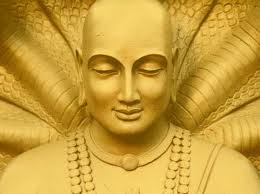Imagine that after everything you have experienced in your life to date, after all of the wonderful things you have already discovered and lived, you came to realise that there is a whole other “world” inside of you that you had never known existed. A place that you find so indescribably delightful to settle in that you want to visit very often, and stay there for as long as possible.
I am talking about a type of consciousness in which you feel no fear, no anxiety, no sense of time or space. Like being a small child who for the first time realises something new and wondrous about our world. How incredible to discover something like that at the age you are today!
This is as close as I can get to describing an experience of meditation, more correctly called dhyana (a Sanskrit word that has the prefix dhi – which means an expanded state of consciousness).
Today the word meditation is misused and overused and this has created a great deal of confusion and misunderstanding about this ancient and fascinating technique. It is sadly more common today to hear about people who don’t like to meditate and don’t want to practise than it is to hear of people who treasure it as a part of their regular routine. The reason is that the market has been polluted with “meditation techniques” that are ineffective and unappealing. Often what is called “meditation” is nothing more than closing the eyes and becoming aware of thoughts and feelings; for the ancient philosophies, this is not meditation.
In the DeRose Method, meditation practice has a simple but well-structured process which includes other vital techniques, like breathing techniques and physical positions, to reach its real goal; a state of hyper-consciousness and self-knowledge.
In accordance with our matriarchal roots we practice in a very pleasurable way, and you will know that you are on the right path when you simply cannot pass a day without practising at least 5 minutes of your meditation; a day without meditation is a wasted day!
Join us on this fabulous journey personal evolution. You will not regret it!







